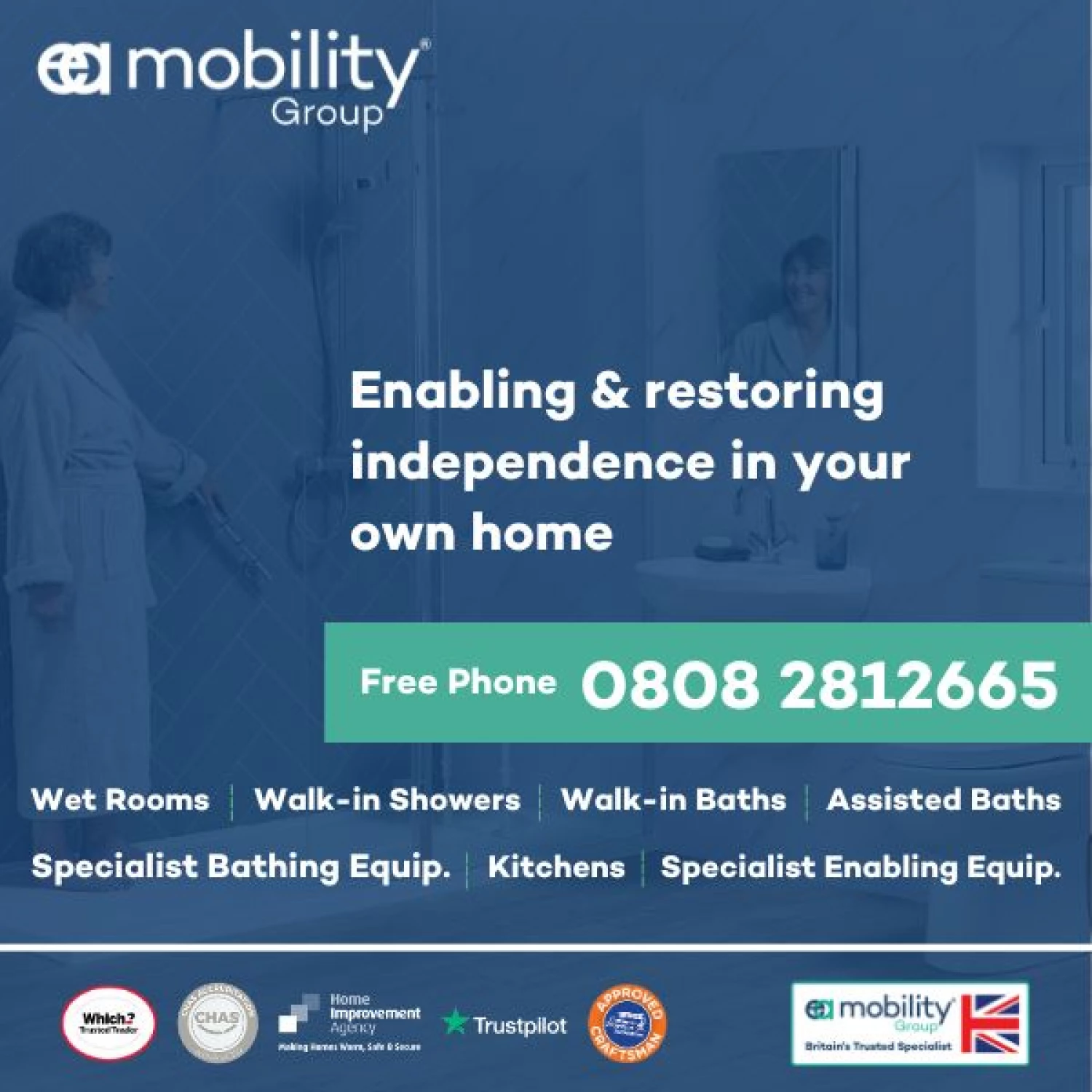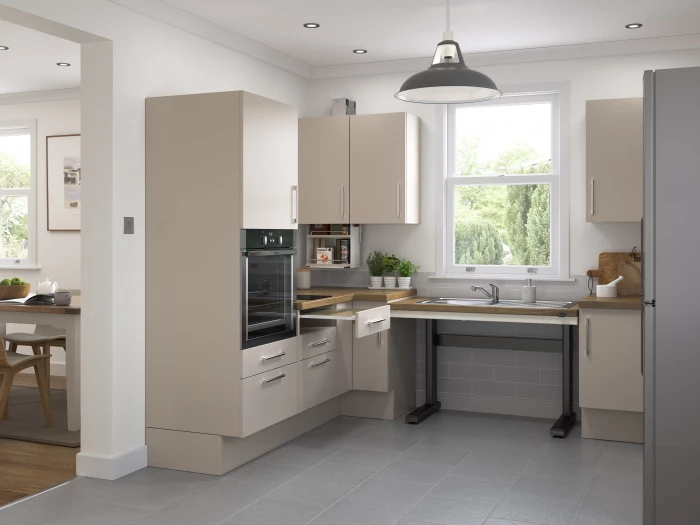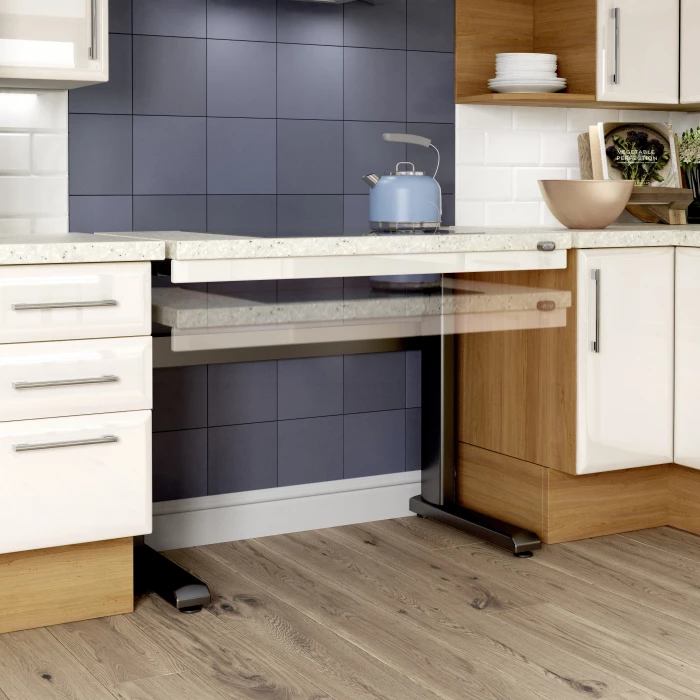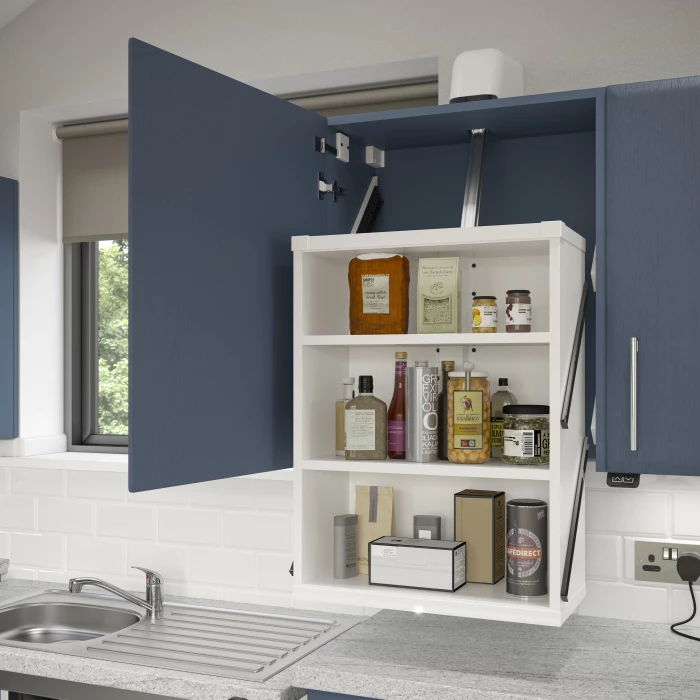With no government requirements for wheelchair user housing or mandated space standards, inaccessibility is a common problem. Here Stuart Reynolds, UK Marketing & Product Management Director at AKW discusses the things installers, designers and specifiers need to remember when designing a kitchen with wheelchair accessibility in mind.
Approximately 1.2 million people in the UK are wheelchair users and only 400,000 of them live in adapted homes. With the kitchen the most likely place for accidents at home, having a space that works for those in wheelchairs is important. Regularly described as the 'hub of the home,' the kitchen is often overlooked in prioritisation of other rooms in the home such as the bathroom when it comes to accessibility.
However, as an integral space for basic functioning, family contact and social interaction the kitchen should be considered just as important to access and use by all family members.
Designed with accessibility in mind
As an integral space, it is important to consider some key design questions when thinking about accessible wheelchair design and installation. These include: how is the kitchen to be used by all the family, will their use change in the future, what workspace, thoroughfare, and turning circle spaces are required and what storage and appliances are needed to enable access and use?
Answering these questions helps create the starting point for a client-centred, accessible design layout.
If the property is new build, then the sky is the limit, but more often than not the designer, architect or installer is faced with a refurbishment of an existing kitchen. When looking at its layout, the position of existing windows and doorways is critical.
If the continuous worktop, oven housing or storage is impacted, then windows or doors might need to be moved to enable the effective use of the space and movement through the kitchen.
As a starting point on wheelchair accessible kitchen design and layout, there is the Government approved Part M of the Building Regulations (AD M) in October 2015, in which the M4(3) Category 3 details the requirements of new build wheelchair accessible minimum design. And this is a useful reference document for information for designers and installers alike.
However, it does quote some measurements which specialists in the field would never adhere to, due to the incompatibility of the design recommendations.
To help bring clarity to wheelchair kitchen design, in consultation with the team at The OT service, AKW has developed a best practice advice guide for those looking at incorporating such design into their plans. The following are some of the highlights from it.
Circulation space
The kitchen area should have clear circulation space of 1500mm x 1500mm between facing floor units, or between floor units and a wall. Wherever possible this circulation space should not be used as a route to other rooms, to avoid the possibility of people knocking into each other.
It is worth noting that raised height, deep recessed plinths can be included in turning area calculations, as this does significantly increase turning area. This is because footplates and feet can pass under units, which is particularly useful in restricted spaces or galley style kitchens.
Worktops
The decision about worktop length, height and position should be based on whether the user's needs fluctuate between standing and sitting. This will dictate whether fixed or height adjustable worktops, such as AKW's ActivMotion Rise and Fall worktops, are going to be necessary to meet their changing requirements.
Also, the depth of a worktop must allow the wheelchair user to be able to wheel far enough forward to access all sockets, wall unit drop down baskets, the sink and the taps.
Sink
The sink should be a shallow bowl 120mm – 150mm deep, insulated underneath and have a rear waste trap or centre bowl space saver waste (monobloc sinks are reversible so have centre bowl waste positions). This allows for a wheelchair user to get fully under the sink to complete the necessary tasks.
By specifying a lever mixer tap (swan neck type or extended spout) with a swivel mechanism of an appropriate height, easy filling of items such as the kettle and saucepans, whilst situated on the draining board is promoted.
Hob
Choosing a hob that can be recessed into the worktop ensures the smooth sliding of dishes and saucepans over it, reducing the need for a wheelchair user to lift and carry heavy items. Induction hobs are the most suitable option, as they are easy to clean, turn off if no saucepan is detected, have a low temperature after use and so reduce the risk of burn injuries.
The only ovens suitable for accessible kitchens will have either a slide and hide or side opening door and will also be fitted with at least one pair of telescopic shelf rails. The oven should be fitted into a tall housing unit and located with its main shelf position at a height suitable to the users' needs.
Adding a heat resistant pull out shelf under or adjacent to the oven with leg clearance below, is also important, to allow items to be moved out of the oven to check or be transferred onto a worktop.
Storage units
Wall units should be fitted at no more than 350mm above the worktop to maximise use and can be fitted with pull down baskets to allow easier access to items, or fit electrically operated units, such as AKW's ActivMotion Wall Units, that come forwards and down, to enable those with limited reach to have use of the whole kitchen.
Lighting
For safety thought needs to be given to the placement of two types of lighting, task and general lighting. General lighting via downlighters should be calculated as one per 1.5 to 2m2. These should be positioned over key task areas. Task lighting should be used under the cupboards and in drawers where specific spaces need to be highlighted.
Creating cost-effective wheelchair accessible kitchens requires careful design. So, for more detailed Occupational Therapy information concerning appliances, grab rails, sockets and switches and lighting placement why not download AKW's latest guide to understanding accessible wheelchair kitchen design here.
AKW is the UK market leader in showering, daily living and kitchen solutions for people with mobility needs. Choice, competitive pricing, and first-class customer service makes AKW the first choice for clients across the UK and abroad.
AKW works closely with Occupational Therapists and Healthcare professionals, to design and manufacture a full range ofeasy access showering,kitchensandmobility supportproducts. AKW's clients include the majority of local authorities, housing associations as well as national and regional contractors.
For more information contact AKW on 01905 823298, email sales@akw-ltd.co.uk, or visit akw-ltd.co.uk.






